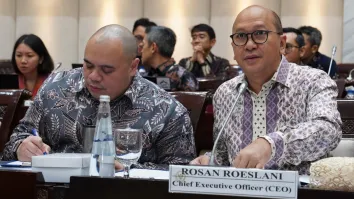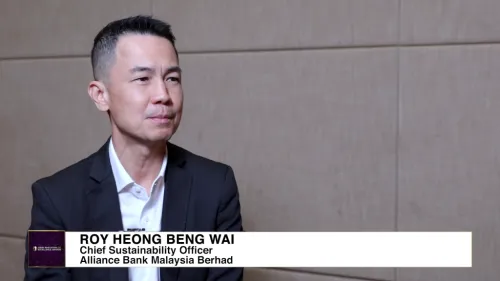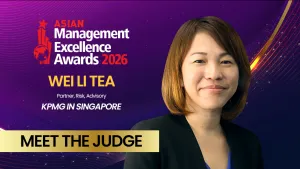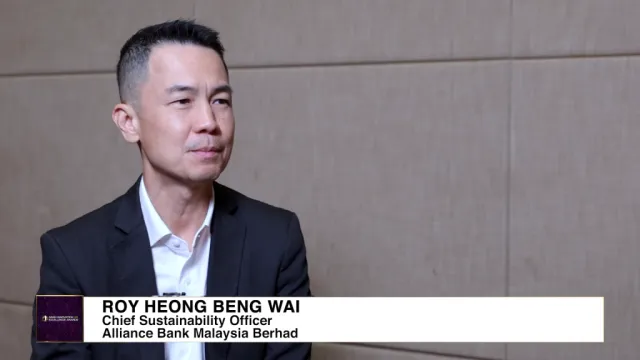
Is ‘Londonisation’ good for Asia’s M&A insurance market?
Industry experts dissect the region’s low usage rates for M&A insurance despite more industry players entering the field.
Whilst insurance deal volumes hit a decade-low at the beginning of 2023, activity picked up in the latter half of the year. Insurance experts said the region, in particular, witnessed a steady influx of players entering the mergers and acquisitions (M&A) insurance arena. But is the market becoming more “buyer-friendly” or plain tough competition?
“In general, 2021 was a really busy time for M&A globally. It was a really bad insurance market from the policyholder perspective, premiums went up. Insurers were capacity-constrained, and some of them hit their target premium early in the year. I think this was different, like in the US. It wasn’t true for everybody, but at least as I understand, in Asia, some of the insurers said at some point in 2021, they're not willing to do more deals for the rest of the year because they hit the quota,” Ai Tajima, partner at Goodwin’s Risk Management & Insurance practice told Insurance Asia.

Clyde & Co.’s Insurance Growth Report for 2024 showed that the world’s deal volumes cascaded 22.9% to 346 deals last year. Despite AI’s potential, significant investment awaits full testing and regulatory clarity. The rise of digital assets and cryptocurrencies presents growth avenues for insurers, particularly in covering associated risks like cyber fraud and data theft.
However, challenges persist from 2023 catastrophes affecting property cover affordability, regulatory shifts like Hong Kong’s new capital regime, and increased enforcement in the United Arab Emirates and Saudi Arabia. Climate change regulations add complexity, with Australia anticipating expanded litigation against carbon-intensive industries. Regulatory changes, like the European Union’s MiCA framework and approval of spot ETFs in the US, create new opportunities.
Despite high interest rates impacting debt funding costs and claims, there’s optimism for M&A growth in 2024 amidst macroeconomic uncertainties, Clyde & Co. projected.
On a promising note, insurers offering coverage for M&A activities could potentially lessen the worry of this risky business. As Tajima wrote in her Goodwin's insight, there is a new era for risk allocation in M&A that is more favourable to buyers and sellers in the region.
“At the moment, the markets are more buyer-friendly globally, there is a valuation gap in terms of maybe sellers starting on auction, but they're not successful, because buyers are not offering prices the sellers are looking for, a reason that’s independent of the availability of insurers in the region. Again, I think the fact that there are more insurers offering better terms and innovation is really helpful, but it's not on its own going to reshape the M&A landscape,” Tajima said.
‘Londonisation’
In the last year or so, eight insurers that are active in London have expanded into Asia. International and domestic insurers are also increasing their interest in and their capability for underwriting policies in local languages such as Japanese and Korean so they can better support domestic M&A transactions in non-English-speaking jurisdictions.
Fierce competition, coupled with slower M&A activity, has driven insurance premiums down — a global trend for M&A insurance. Specifically, premiums used to range from 1.5% to 3% of the policy limit in Asia, depending on the applicable jurisdiction(s), and even exceeded 4% in certain circumstances in 2021 during a busy M&A market.
In most of Asia today, average premium rates range from 1% to 2% of the policy limit. Insurers and brokers report more heightened negotiation of coverage enhancements and streamlined underwriting processes, which some call the “Londonisation” of Asian warranties and indemnity (W&I) insurance.
This trend signifies a shift towards standardised policy terms and coverage enhancements, mirroring practices prevalent in the London market. This harmonisation not only fosters greater transparency and consistency but also facilitates cross-border transactions by aligning insurance practices across jurisdictions.
“Globally, there are two types of transactional risk or what I’m calling for shorthand, M&A insurance. The form of insurance that’s offered in Asia is W&I. And those products originated in London and are also used in the UK and Europe. It’s most mature in London, and the Asian W&I market always had some ties to London in terms of London-trained underwriters coming to Asia and developing their product,” Tajima said.
“When we talk about Londonisation, it is because of this wave of new insurers that mostly came from that market and are familiar with what’s happening there. The markets are becoming a lot more interconnected. Now, whether those features make sense in a particular deal, that’s, I think, to be seen. But there is more openness to discuss certain coverage enhancements or assimilate the policy terms and conditions,” she added.
Rowan Bamford, president of Liberty GTS, told Insurance Asia in a separate interview that this trend relates to several factors, including the relatively small number of established players historically present in the region. The emergence of new entrants, often MGA (Managing General Agent) businesses, is attributable to sluggish domestic markets and the allure of international expansion to enhance the saleability of their businesses.

“Because the global M&A are so interlinked that they’re not likely to disappear. It’s counterintuitive to what we’re seeing because we’re seeing the market being slow in M&A – which is as slow here as anywhere else,” Bamford asked. “So, we wonder why is everyone investing in the region at this point in time?”
Will Lewis, head of APAC at Liberty GTS, contributed a cautionary note in the discussion, emphasising the importance of long-term commitment and operational presence in the region. Whilst increased competition may provide buyers with more options, it also raises concerns about the sustainability and reliability of insurers, particularly in the event of a claim.

“Well, it’s understanding the local culture if it’s cross-border — understanding what they’re buying. And I guess the value that’s being subscribed to and also the risks that are associated with it.” Lewis told Insurance Asia in a joint interview with Bamford.
“I guess the commitment to the region is significant. The other thing is if they are very price sensitive then I feel they might end up with a worse product and a worse outcome in the long-term. I think that’s quite a significant challenge on the other end – do insurers have to discern who is better? And obviously, the brokers will help them with that or should help them with that,” Lewis said.
Bamford suggested that whilst reduced pricing may initially appear favourable for buyers, it could lead to challenges.
“If the cost of the insurance is cheaper, more people might be likely to buy it. It is worth noting that in the short term, the reduction in pricing seems like a good thing for buyers of policies and for insurers. But, it's only a good thing if the pricing is adequate in the medium-term, to make the product viable and profitable enough for a lot of these new entrants to stay in the region. If they’re doing it so cheaply, then they’re not making any money. And it's not their primary focus,” Bamford said.
On the other hand, Goodwin’s Tajima stressed on the versatility of W&I insurance, noting its potential beyond traditional buyouts. However, navigating insurance complexities poses hurdles, underscoring the importance of buyer sophistication in negotiating terms.
Albeit an influx of insurers entering the region, W&I insurance is still a niche market.
“In Asia, it’s been around for years, but the usage rates are lower, and the process is not as buyer-driven, as in places like the US. The key story here is I think the Asian insurance market is now becoming more buyer-friendly. There are various options that may be available, but the buyers are not necessarily having a chance to pick and choose,” Tajima told Insurance Asia.
“In M&A, it’s not uncommon in Asian deals for the seller to say ‘You know what, I want you, the buyer, to do that with W&I insurance, and I've already picked the broker and insurer for you, and here are the terms.’ That’s called a ‘seller flip’ in the US because the seller initiates a process and then flips it to the buyer [...] In Asia, the insurance markets are offering the ability to offer more enhancements, and ideally, the buyers are getting involved early on with an adviser to think about what works best for them. But in reality, buyers do not always have as much say in that process,” added Tajima.
Outlook
Looking ahead, both Bamford and Lewis anticipate continued growth in the M&A insurance market, albeit with challenges stemming from increased competition and potential loss deterioration.
Innovations such as tax and contingent liability products are expected to gain traction, providing buyers and sellers with more tailored solutions for their transactions.
“For the W&I market’s loss performance, we think it’s been pretty consistent over time. It’s a profitable book of business if written correctly by people who know what they’re doing. I suspect as an industry will see the loss performance deteriorate. Because we’ve got new players who are less familiar with the region and who are writing business at cheaper prices than ever — they will likely make more mistakes while they learn. And they’ll be making those mistakes while charging the lowest rates that have been charged,” Bamford told Insurance Asia.
Through the same looking glass, Tajima articulated a sense of cautious optimism regarding the future of the Asian M&A insurance market.
“The M&A market is not necessarily down, but it’s not as crazy as it was in 2021. I think insurers need to see, in the short term and long term, how they want to participate in the Asia market. I think the Asian market is poised for growth. But it’s, it’s too early to tell. [...] I think the markets are becoming more interconnected, which I find really interesting. I think we're starting to learn each other’s language and have a dialogue (about coverage available in Asia versus other regions),” reminded Tajima.
“It’ll be interesting if you want to talk three to five years from now, I think the market may be very different. Asia is always going to be different (and not just follow the footsteps of the US or Europe). But, we can make some educated guesses. The US and UK are probably the most mature in terms of the transactional insurance market’s usage rate. Asian markets, on the other hand, are growing. And there’s much more room for growth.” Tajima said in an optimistic tone.



















 Advertise
Advertise








